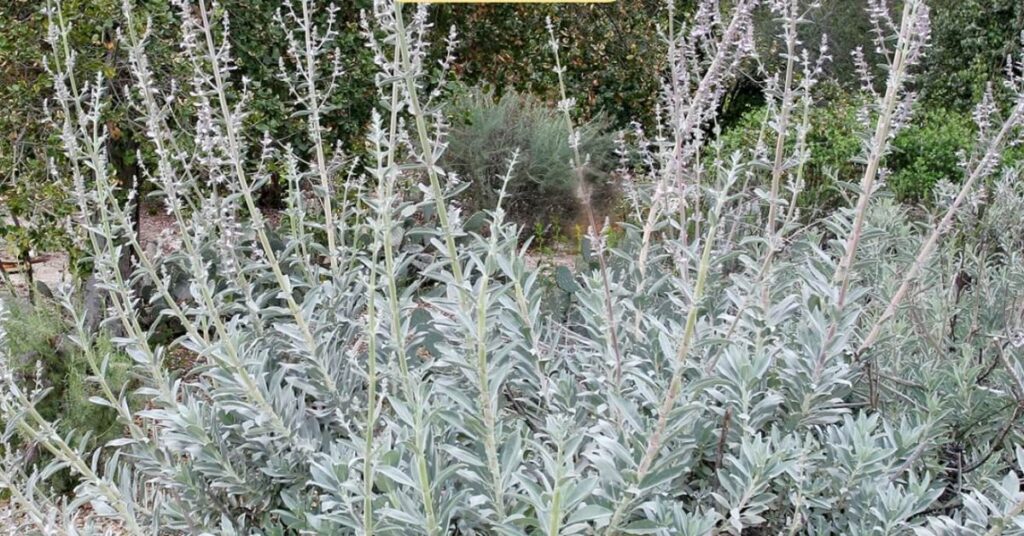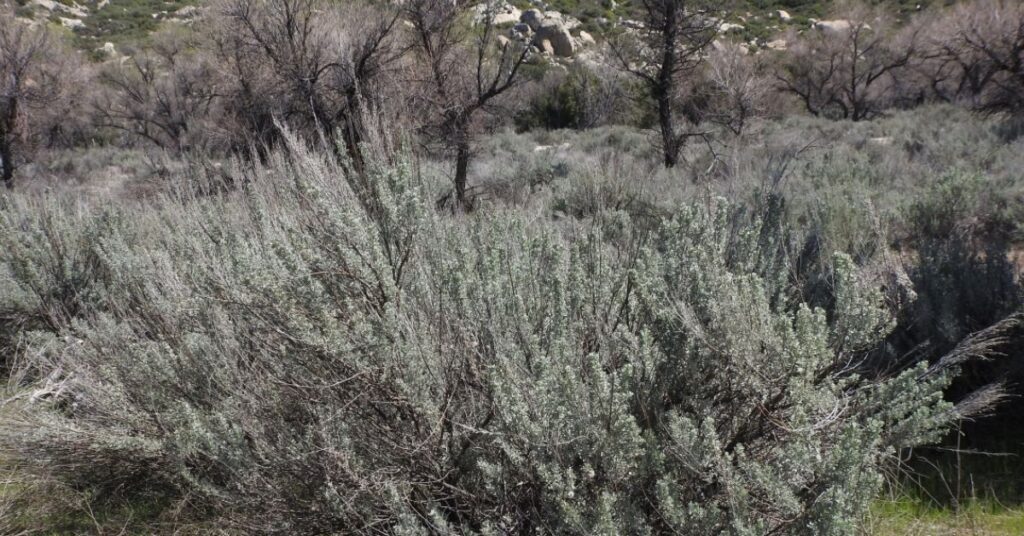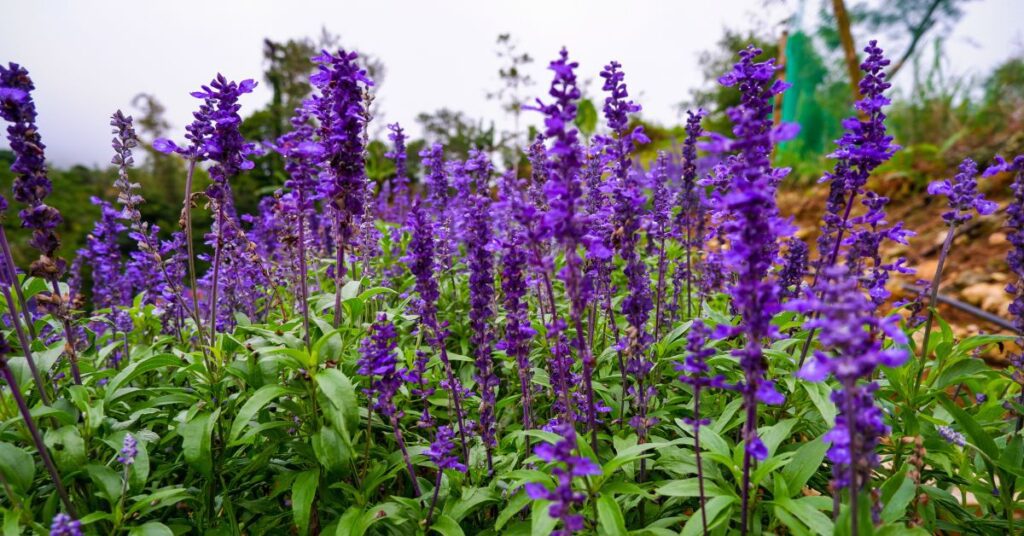What is Sage Smudging?
Sage smudging is one of the most powerful and widely recognized methods of energy cleansing, used for thousands of years by Indigenous peoples of North America. This sacred practice involves burning dried sage and using the aromatic smoke to purify spaces, objects, and people of negative energy.
In recent years, sage smudging has gained popularity worldwide as people seek natural ways to create peaceful, harmonious environments in their homes and workplaces. However, with this popularity comes the responsibility to approach the practice with respect, understanding, and proper technique.
Whether you’re feeling stuck in negative patterns, moving into a new home, or simply wanting to refresh the energy in your space, sage smudging offers a time-tested method for transformation and renewal. This comprehensive guide will teach you everything you need to know to begin your smudging practice safely and effectively.
Table of Contents

The Sacred History and Cultural Significance
Indigenous Roots and Respect
Sage smudging originates from the spiritual practices of various Native American tribes, including the Lakota, Cherokee, and many others. For these communities, smudging is not just a cleansing technique, it’s a sacred ceremony that connects practitioners to their ancestors, the natural world, and the divine.
Important Cultural Considerations:
•Approach smudging with reverence and respect for its origins
•Understand that you’re participating in a practice with deep spiritual significance
•Source your sage ethically and sustainably
•Avoid commercializing or trivializing the practice
•Consider learning about the specific tribal traditions that resonate with you
The Spiritual Foundation
In Indigenous traditions, sage smudging is based on the belief that all things possess energy or spirit. When negative experiences, emotions, or entities accumulate in a space, smudging helps to:
•Clear stagnant or harmful energy
•Invite positive spirits and protection
•Create sacred space for ceremony or meditation
•Restore balance and harmony
•Connect with ancestral wisdom and natural forces
Modern Applications
Today, people from all backgrounds use sage smudging for various purposes:
•Home cleansing after arguments, illness, or negative events
•New space preparation when moving or redecorating
•Spiritual practice as part of meditation or prayer routines
•Emotional clearing during times of stress or transition
•Protection rituals for ongoing energetic maintenance
Understanding Different Types of Sage
White Sage (Salvia apiana)

White sage is the most commonly used variety for smudging and is considered the most potent for clearing negative energy.
Characteristics:
•Silvery-white leaves with a strong, distinctive aroma
•Native to Southern California and Baja California
•Produces thick, white smoke when burned
•Considered the “gold standard” for energy clearing
Best Uses:
•Deep cleansing of spaces with heavy or stagnant energy
•Clearing after illness, arguments, or traumatic events
•Preparing sacred space for spiritual work
•Initial cleansing of new homes or offices
Desert Sage (Artemisia tridentata)

Also known as sagebrush, this variety has a lighter, more herbal scent.
Characteristics:
•Smaller, more delicate leaves
•Milder aroma than white sage
•Produces lighter smoke
•More sustainable and widely available
Best Uses:
•Gentle daily cleansing
•Sensitive individuals who find white sage too strong
•Combining with other herbs for custom blends
•Regular maintenance smudging
Garden Sage (Salvia officinalis)

Common culinary sage can also be used for smudging, though it’s less traditional.
Characteristics:
•Readily available and easy to grow
•Familiar herbal scent
•Less potent than white sage
•Good for beginners or those with limited access to traditional varieties
Best Uses:
•Learning and practicing smudging techniques
•Light cleansing and blessing
•Kitchen and dining area purification
•Combining with other herbs
Ethical Sourcing Considerations
Sustainability Concerns: White sage has become over-harvested due to increased demand. When purchasing sage:
•Buy from reputable suppliers who work directly with Indigenous communities
•Look for sustainably harvested or cultivated sage
•Consider growing your own sage plants
•Use sage mindfully—a little goes a long way
•Explore alternative cleansing herbs when appropriate
Supporting Indigenous Communities:
•Purchase from Native American-owned businesses when possible
•Avoid mass-produced sage bundles from unknown sources
•Learn about and support Indigenous rights and environmental causes
•Approach the practice with gratitude and respect
Essential Supplies for Sage Smudging
Basic Smudging Kit
Sage Bundle or Loose Sage:
•Choose high-quality, properly dried sage
•Bundles should be tightly wrapped and aromatic
•Loose sage allows for more control over quantity used
Fire-Safe Container:
•Abalone shell (traditional choice)
•Ceramic bowl or plate
•Clay or stone dish
•Metal container (avoid plastic or glass that might crack)
Lighting Tools:
•Wooden matches (preferred over lighters)
•Candle for sustained flame
•Hemp wick for natural lighting
Feather or Fan (Optional):
•Used to direct smoke flow
•Choose ethically sourced feathers
•Hand or breath can also direct smoke
Sand or Salt:
•For extinguishing sage safely
•Absorbs heat and prevents fire hazards
•Can be reused multiple times
Safety Equipment
Fire Safety:
•Fire extinguisher or water nearby
•Smoke detector awareness
•Clear path to exits
•Remove flammable materials from area
Ventilation:
•Open windows and doors
•Ensure adequate air circulation
•Consider neighbors and shared spaces
•Have fresh air access for yourself
Step-by-Step Smudging Process

Preparation Phase
1. Set Your Intention Before lighting the sage, take a moment to clarify your purpose:
•What do you want to release or clear?
•What positive energy do you want to invite?
•Are you cleansing for yourself, others, or the space?
•Speak your intention aloud or hold it clearly in your mind
2. Prepare Your Space
•Open windows and doors for energy to flow out
•Remove or cover smoke-sensitive items
•Clear pathways for easy movement
•Gather all supplies in one location
•Inform others in the space about your plans
3. Center Yourself
•Take several deep breaths
•Ground yourself through meditation or prayer
•Connect with your intention
•Ask for guidance and protection
•Express gratitude for the sage and its gifts
Lighting the Sage
1. Safe Lighting Technique
•Hold the sage bundle at a 45-degree angle
•Light the tip with a match or candle
•Allow the flame to burn for 10-20 seconds
•Gently blow out the flame, leaving glowing embers
•The sage should produce steady, aromatic smoke
2. Maintaining the Smoke
•If smoke diminishes, gently blow on the embers
•Tap ashes into your fire-safe container
•Re-light if necessary, but avoid constant flames
•The goal is smoldering, not burning
3. Troubleshooting Common Issues
•Too much flame: Blow more gently or wave in air
•Not enough smoke: Blow softly on embers or re-light tip
•Sage won’t stay lit: Ensure sage is properly dried
•Too much smoke: Use less sage or improve ventilation
The Cleansing Process
1. Start with Yourself
•Begin by smudging your own energy field
•Waft smoke around your head, heart, and body
•Set the intention to clear your own energy first
•This prevents you from carrying negative energy through the space
2. Systematic Space Clearing
•Start at the front door or main entrance
•Move clockwise (sunwise) through the space
•Pay special attention to corners where energy stagnates
•Include closets, behind doors, and under stairs
•Don’t forget windows, mirrors, and electronic devices
3. Specific Techniques for Different Areas
Corners and Tight Spaces:
•Use feather or hand to direct smoke into corners
•Spend extra time in areas that feel heavy or stagnant
•Visualize the smoke dissolving negative energy
Large Rooms:
•Work systematically from one side to the other
•Include ceiling corners and floor edges
•Pay attention to areas where people spend most time
Electronic Devices:
•Gently waft smoke around computers, TVs, and phones
•These devices can accumulate electromagnetic stress
•Don’t get smoke directly into vents or openings
4. Completing the Circuit
•End where you began (usually the front door)
•Thank the sage for its service
•Express gratitude for the cleansing
•Set intention for the newly cleared space
Proper Extinguishing
1. Safe Extinguishing Methods
•Press the burning tip into sand or salt
•Twist gently to ensure all embers are out
•Never use water (can damage remaining sage)
•Ensure no glowing embers remain
2. Storage
•Store partially used bundles in dry location
•Wrap in natural cloth or paper
•Keep away from moisture and direct sunlight
•Label with date for freshness tracking
What to Say During Smudging

Traditional Prayers and Intentions
While specific prayers vary among tribes, the essence remains consistent: respect, gratitude, and clear intention.
Sample Opening Prayer: “Great Spirit, I ask for your blessing as I cleanse this space. May all negative energy be transformed into light. May this space be filled with love, peace, and protection. I am grateful for the gift of this sacred sage.”
During Cleansing: “I release all energy that does not serve the highest good. I call in light, love, and positive energy. May this space be a sanctuary of peace and harmony.”
Closing Gratitude: “Thank you, sacred sage, for your cleansing power. Thank you, Great Spirit, for your protection and guidance. May this space remain blessed and protected.”
Personal Affirmations
Create your own meaningful statements:
For New Homes: “I bless this space as my sanctuary. May it be filled with joy, abundance, and love. May all who enter feel welcome and at peace.”
After Conflict: “I release all anger, hurt, and negative emotions from this space. I call in understanding, forgiveness, and harmony for all who live here.”
For Protection: “I surround this space with white light and divine protection. Only positive energy is welcome here. This home is a beacon of love and light.”
For Healing: “I clear all energy of illness and suffering from this space. I call in healing light and vibrant health for all who dwell here.”
Respectful Language Guidelines
Do:
•Speak from the heart with genuine intention
•Use respectful, reverent language
•Express gratitude to the sage and spiritual forces
•Acknowledge the sacred nature of the practice
Avoid:
•Commanding or demanding language
•Trivializing the practice with casual speech
•Cultural appropriation of specific tribal prayers without permission
•Negative or fearful language that might attract what you’re trying to clear
Common Mistakes to Avoid
Safety Hazards
Fire Safety Mistakes:
•Never leave burning sage unattended
•Don’t smudge near smoke detectors without warning others
•Avoid smudging in windy conditions
•Keep sage away from curtains, papers, and flammable materials
•Always have extinguishing materials ready
Health Considerations:
•Ensure adequate ventilation to prevent smoke inhalation
•Be mindful of asthma or respiratory sensitivities
•Pregnant women should consult healthcare providers
•Keep pets in well-ventilated areas or outside during smudging
Cultural Appropriation Concerns
Respectful Practice:
•Learn about the cultural origins of smudging
•Avoid claiming expertise in traditions not your own
•Don’t commercialize or profit from sacred practices
•Acknowledge the source of your knowledge
•Support Indigenous communities and causes
What Not to Do:
•Don’t call yourself a “shaman” or use other sacred titles inappropriately
•Avoid mixing smudging with unrelated spiritual practices carelessly
•Don’t teach smudging without proper knowledge and respect
•Avoid using sacred symbols or items without understanding
Ineffective Techniques
Common Technical Mistakes:
•Using too much sage (wasteful and overwhelming)
•Not opening windows for energy to escape
•Rushing through the process without intention
•Forgetting to cleanse yourself first
•Not properly extinguishing the sage
Energetic Mistakes:
•Smudging with negative emotions or anger
•Focusing on what you don’t want instead of what you do want
•Not setting clear intentions before beginning
•Forgetting to invite positive energy after clearing
•Neglecting to express gratitude
After Smudging: Integration and Protection
Sealing the Energy
After clearing negative energy, it’s important to fill the space with positive intentions:
Visualization Techniques:
•Imagine white or golden light filling every corner
•Visualize a protective bubble surrounding your space
•See your home glowing with peace and harmony
•Picture positive energy flowing freely throughout
Additional Blessing Methods:
•Light white candles to anchor positive energy
•Play uplifting music or chanting
•Burn sweet-smelling incense like sandalwood or frankincense
•Place fresh flowers or plants in the space
Proper Disposal of Ashes
Respectful Disposal:
•Scatter ashes in your garden or natural area
•Bury ashes in earth with gratitude
•Add to compost (if using organic sage)
•Never throw ashes in regular trash
Reusing Materials:
•Sand or salt can be reused multiple times
•Clean containers between uses
•Store supplies in sacred or special place
•Keep smudging kit together for easy access
Follow-up Practices
Daily Maintenance:
•Open windows regularly for fresh air circulation
•Maintain clean, organized spaces
•Practice gratitude for your cleansed environment
•Notice and appreciate the improved energy
Weekly Check-ins:
•Assess how the space feels
•Address any areas that seem to need attention
•Light sage briefly for maintenance if needed
•Continue setting positive intentions
Monthly Deep Cleansing:
•Perform full smudging ritual monthly or as needed
•Combine with physical deep cleaning
•Reassess and refresh protective measures
•Celebrate the ongoing transformation of your space
Combining Sage with Other Cleansing Methods
Complementary Practices
Sage smudging works beautifully with other energy cleansing techniques:
Salt Cleansing:
•Place bowls of sea salt in corners after smudging
•Use salt water to clean floors with intention
•Create salt barriers at entrances for ongoing protection
Crystal Enhancement:
•Place protective crystals like black tourmaline after smudging
•Use clear quartz to amplify the cleansing energy
•Create crystal grids for sustained protection
Sound Clearing:
•Ring bells or use singing bowls during or after smudging
•Play high-vibration music to anchor positive energy
•Use your voice to chant or sing blessings
Essential Oils:
•Diffuse purifying oils like eucalyptus or tea tree after smudging
•Create room sprays with protective essential oils
•Anoint doorways and windows with blessed oils
For a comprehensive approach to energy cleansing that includes sage smudging along with 15+ other powerful techniques, explore our Complete Guide to Energy Cleansing: Transform Your Space into a Sanctuary of Peace and Prosperity.
When to Smudge: Timing and Frequency
Ideal Times for Smudging
Life Transitions:
•Moving into a new home or office
•After the end of a relationship
•Following illness or recovery
•Before starting new projects or ventures
•During major life changes
Regular Maintenance:
•Monthly full-house cleansing
•Weekly light smudging of problem areas
•After hosting large gatherings
•Following arguments or negative events
•When energy feels stagnant or heavy
Seasonal Cleansing:
•Spring cleaning for new growth energy
•Autumn preparation for winter introspection
•After holidays or intense family gatherings
•During equinoxes and solstices
Signs Your Space Needs Smudging
Physical Indicators:
•Unexplained fatigue when at home
•Frequent minor accidents or injuries
•Electronics malfunctioning regularly
•Difficulty sleeping or nightmares
•Pets avoiding certain areas
Emotional Signs:
•Increased arguments or tension
•Feeling anxious or uncomfortable at home
•Difficulty concentrating or thinking clearly
•Sense of being watched or not alone
•General feeling that something is “off”
Environmental Clues:
•Areas that feel cold or heavy
•Rooms that are hard to keep clean or organized
•Persistent odors without obvious source
•Plants struggling despite proper care
•Lights flickering or dimming unexpectedly
Building Your Smudging Practice
Starting Small
Beginner Approach:
•Begin with smudging just one room
•Practice the basic technique until comfortable
•Focus on clear intention setting
•Keep sessions short (10-15 minutes)
•Build confidence before expanding
Gradual Expansion:
•Add one room at a time to your practice
•Experiment with different types of sage
•Try various intention-setting methods
•Incorporate complementary practices slowly
•Develop your personal style and preferences
Creating Ritual and Routine
Personal Ceremony:
•Develop opening and closing rituals
•Create a special space for your smudging supplies
•Establish regular smudging schedule
•Keep a journal of your experiences and observations
•Celebrate the positive changes in your space
Family Involvement:
•Teach family members about respectful smudging
•Include children in age-appropriate ways
•Create family intentions and blessings
•Respect different comfort levels and beliefs
•Make it a bonding and healing experience
Embracing the Sacred Practice
Sage smudging is far more than a simple cleansing technique—it’s a bridge between the ancient wisdom of Indigenous peoples and our modern need for peace, clarity, and spiritual connection. When approached with respect, intention, and proper technique, smudging can transform not only your living space but your entire relationship with your environment.
As you begin or deepen your smudging practice, remember that the most important elements are your intention, respect for the tradition, and commitment to creating positive change. The sage is a powerful ally, but your own energy and purpose are what truly drive the transformation.
Start slowly, practice regularly, and pay attention to the subtle shifts in your space and your own well-being. Many people report feeling lighter, more peaceful, and more connected to their homes after incorporating sage smudging into their lives.
Whether you’re clearing the energy after a difficult period, preparing your space for new beginnings, or simply maintaining the harmonious atmosphere you’ve created, sage smudging offers a time-tested path to energetic renewal and spiritual growth.
Remember that smudging is just one powerful tool in the toolkit of energy cleansing. For a complete understanding of how to create and maintain harmonious energy in your home using multiple complementary methods, be sure to explore our comprehensive guide that covers everything from crystal protection to seasonal maintenance rituals.
Your journey toward a more peaceful, energetically clear living space begins with a single intention and a bundle of sacred sage. Trust the process, honor the tradition, and welcome the transformation that awaits.
Enjoyed this content? Read more on our website.
References
Salvia officinalis (Garden Sage). <https://www.gardenia.net/plant/salvia-officinalis>.
